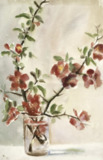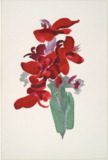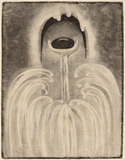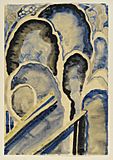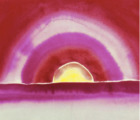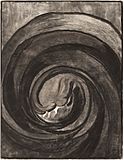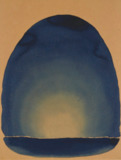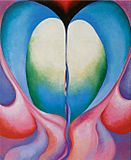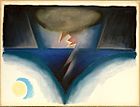Georgia O'Keeffe facts for kids
Quick facts for kids
Georgia O'Keeffe
|
|
|---|---|
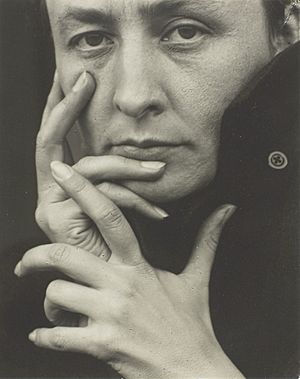
O'Keeffe in 1918, photograph by Alfred Stieglitz
|
|
| Born |
Georgia Totto O'Keeffe
November 15, 1887 Sun Prairie, Wisconsin, U.S.
|
| Died | March 6, 1986 (aged 98) Santa Fe, New Mexico, U.S.
|
| Education | School of the Art Institute of Chicago Columbia College Teachers College, Columbia University University of Virginia Art Students League of New York |
| Known for | Painting |
| Movement | American modernism, Precisionism |
| Spouse(s) | |
| Awards | National Medal of Arts (1985) Presidential Medal of Freedom (1977) Edward MacDowell Medal (1972) |
Georgia O'Keeffe (November 15, 1887 – March 6, 1986) was a very famous American artist. She's known for her bold and beautiful paintings, especially her close-up pictures of flowers, New York skyscrapers, and the landscapes of New Mexico. Her art is unique and has inspired many people over the years.
Contents
Early life and artistic beginnings (1887-1916)
Georgia O'Keeffe was born on November 15, 1887, in a farmhouse in the town of Sun Prairie, Wisconsin. Her parents, Francis Calyxtus O'Keeffe and Ida (Totto) O'Keeffe, were dairy farmers. She was the second of seven children. Her family moved around a bit, and she spent time in Virginia and eventually went to art school in Chicago and New York City. She wasn't always sure what she wanted to do, trying different things like teaching before fully committing to art.
She studied at the Art Institute of Chicago from 1905 to 1906, and then at the Art Students League of New York from 1907 to 1908. These schools helped her develop her skills, but she also learned a lot by experimenting on her own. She was fascinated by different art styles and techniques, always trying to find her own unique way of expressing herself through her art.
In 1912, she took a summer course at the University of Virginia, and then she taught art in Texas and South Carolina. Teaching gave her a chance to think about art and how to share her passion with others. She also continued to develop her own artistic style during this time.
One of the important things that happened in her early career was her meeting with Alfred Stieglitz, a very influential photographer and art gallery owner. He saw her work and was immediately impressed. He started showing her paintings in his gallery, 291, in New York City. This was a huge step for her career, giving her the recognition she deserved. This happened around 1916.
New York City and Abstract Art (1916-1929)
Her early paintings were often abstract, meaning they didn't represent real things in a realistic way. She used shapes and colors to express feelings and ideas. These paintings were quite different from what most people were used to seeing, and they caused a lot of discussion and interest. Think of it like this: instead of painting a flower that looks exactly like a real flower, she might paint shapes and colors that suggest a flower, but in a more imaginative way.
Her paintings from this period often featured charcoal drawings and abstract paintings. She experimented with different techniques and styles, always pushing the boundaries of what was considered art. She was a pioneer, exploring new ways to express herself through her art. She was also very interested in the way things looked from different angles and perspectives.
Her relationship with Alfred Stieglitz became very important to her life and career. They married in 1924, and he continued to support her work and her artistic development. He was a great influence on her, and she was a great influence on him. They worked together, and they supported each other's artistic endeavors.
New Mexico and Landscape Painting (1929-1986)
In 1929, Georgia started spending more and more time in New Mexico. She was drawn to the beauty of the desert landscape, the unique colors, and the vastness of the space. This period marked a significant shift in her artistic style. She started painting the landscapes of New Mexico, focusing on the bones of animals, the vastness of the desert, and the unique beauty of the southwestern United States.
She bought a house in Abiquiú, New Mexico, in 1945, and she spent the rest of her life there. She continued to paint the landscapes around her, capturing the essence of the desert in her work. She painted mountains, skies, and flowers, but she always did it in her own unique style. She wasn't just copying what she saw; she was interpreting it, expressing her own feelings and understanding of the landscape.
She painted many different kinds of flowers, but she is especially known for her close-up paintings of flowers. These paintings are incredibly detailed and show the beauty of flowers in a way that most people had never seen before. She made the flowers seem almost magical, highlighting their textures and colors.
Her paintings of New Mexico landscapes are some of her most famous works. She captured the beauty and mystery of the desert, showing its vastness and its unique character. She used bold colors and simple shapes to create powerful images that convey a sense of place and time.
Later Life and Legacy (1960-1986)
Even in her later years, Georgia O'Keeffe continued to paint. She remained active and productive, creating art until very close to her death. She was a remarkable woman who lived a long and fulfilling life, dedicated to her art.
She received many awards and honors throughout her career, recognizing her significant contributions to the art world. Her work is still studied and admired today, and she continues to inspire artists and art lovers around the world. Her paintings are in many museums and private collections, and they are worth millions of dollars.
Georgia O'Keeffe died in Santa Fe, New Mexico, on March 6, 1986, at the age of 98. She left behind a vast body of work that continues to inspire and amaze people. Her art is a testament to her talent, her vision, and her dedication to her craft. She showed the world that art can be bold, beautiful, and deeply personal. She showed that a woman could be a successful and influential artist, paving the way for many other women artists. Her life and work are a source of inspiration for many, and her legacy continues to live on. She is remembered as one of the most important American artists of the 20th century. Her impact on the art world is undeniable, and her paintings continue to be celebrated for their beauty, originality, and power. She is a true icon of American art.
Awards and honors
In 1938, O'Keeffe received an honorary degree of "Doctor of Fine Arts" from The College of William & Mary. Later, O'Keeffe was elected to the American Academy of Arts and Letters and in 1966 was elected a Fellow of the American Academy of Arts and Sciences. Among her awards and honors, O'Keeffe received the M. Carey Thomas Award at Bryn Mawr College in 1971 and two years later received an honorary degree from Harvard University.
In 1977, President Gerald Ford presented O'Keeffe with the Presidential Medal of Freedom, the highest honor awarded to American civilians. In 1985, she was awarded the National Medal of Arts by President Ronald Reagan. In 1993, she was inducted into the National Women's Hall of Fame.
Personal life
Marriage
In June 1918, O'Keeffe began dating Alfred Stieglitz, who was a married man at that moment. Owing to the legal delays caused by Stieglitz's first wife and her family, it would take six years before he obtained a divorce. In 1924, O'Keeffe and Stieglitz got married. For the rest of their lives together, their relationship was, "a collusion....a system of deals and trade-offs, tacitly agreed to and carried out, for the most part, without the exchange of a word. Preferring avoidance to confrontation on most issues, O'Keeffe was the principal agent of collusion in their union," according to biographer Benita Eisler. They lived primarily in New York City, but spent their summers at his father's family estate, Oaklawn, in Lake George in upstate New York.
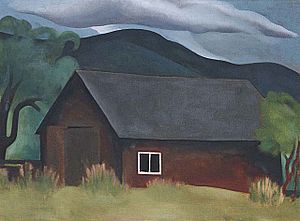
Paintings
-
O'Keeffe, Drawing No. 2 – Special, 1915, charcoal on laid paper, 23.6 by 18.2 inches (60 cm × 46.3 cm), National Gallery of Art
-
O'Keeffe, No. 8 – Special, 1916, Whitney Museum of Art
-
O'Keeffe, Light Coming on the Plains No. II, 1917, watercolor on newsprint paper, 11+7⁄8 by 8+7⁄8 inches (30 cm × 23 cm), Amon Carter Museum of American Art
-
O'Keeffe, Red Canna, 1919, oil on board, High Museum of Art, Atlanta
-
O'Keeffe, A Storm, 1922, pastel on paper, mounted on illustration board, 18.3 by 24.4 inches (46.4 cm × 61.9 cm) Metropolitan Museum of Art
See also
 In Spanish: Georgia O'Keeffe para niños
In Spanish: Georgia O'Keeffe para niños


